How to measure customer success?

Contents:
- What is customer success?
- Why should you track it?
- What types of metrics measure customer satisfaction?
- Product success metrics
- Conclusions
When we talk about progress, a term like “success strategy” will definitely pop up. But what identifies this victory? Now, we are moving away from full concentration on the product and are paying more attention to customer experience. And customer success metrics become a new prerogative. At the same time, it does not only show the perspective and displays the result but because it outlines the value of the product for customers and generates the development.
Down below, we’ve prepared all tracking metrics to stimulate your business growth.
What is customer success?
To put it simply, customer success includes some specific metrics to determine how good you perform in customer support service for eCommerce. When you are growing your company or business, it is extremely crucial to understand where you are at the moment and where to go next.
Moreover, metrics are tools, which show customer satisfaction with services provided and how useful the product is. An indicator of the successful customer strategy is a predominance of the influx of clients over their leaving.
Why should you track it?
We will tell you the secret. Word-of-mouth is what actually drives your purchases. And it is the key explanation why you must track customer success and provide productive communication with them. The opinion of other clients about a product or service is what matters most for the rest of your customers - people tend to choose based on the other’s point of view.
When your customers are satisfied with their outcome, they will not only come back but also bring new leads. Besides, if you track the quality of the product, it will be painless to improve it. Sell something to already active clients, than search for a new one.
What types of metrics measure customer satisfaction?
Generally, there are four main types of metrics:
- Churn metrics:
- Customer churn
- Monthly recurring revenue churn (MRR churn)
- Net MRR churn
- Expansion revenue:
- Expansion MRR
- Customer Satisfaction:
- Net Promoter Score (NPS)
- Customer Satisfaction Score (CSAT)
- Other metrics:
- Average Revenue Per Account (ARPA)
- Customer Retention Cost (CRC)
- Customer Lifetime Value (CLV)
- Conversion Rate (CR)
How to deal with all these scary abbreviates? We'll explain below.
Product success metrics
There are plenty of metrics used by SaaS companies, but they all can be separated and defined by two questions: what customers are doing towards your business and how are they feeling.
We will start with the churn metrics, which are certainly identified by the actions.
Churn metrics
First of all, churn in general is a more negative side of the coin, we use it to determine how many customers did we lose, depending on different factors.
- Customer churn
Customer churn is the basic one and the easiest to count. You just take the number of clients, who quitted you per month (for example) and divide it by the number of clients that you had at the beginning of the month and multiply one hundred.
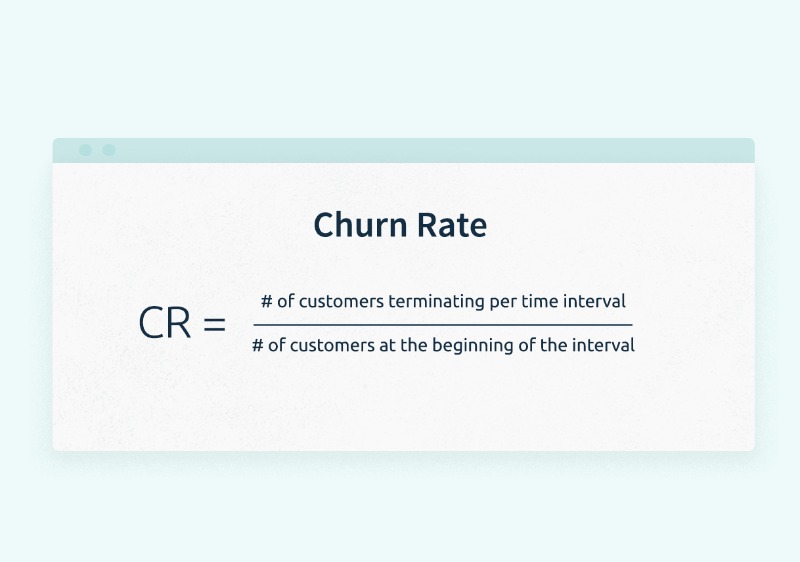
- MRR Churn
MRR churn is also called gross dollar churn. It is a percentage that your company lost due to outflow of clients, but in this churn, we take into account circumstances like not leaving for good. It is when customers take a cheaper tariff plan than it was before.
In this case, we take revenue lost from the customer churn and outflow in this month, simply put, the sum of all canceled contracts, and divide it by the revenue you had at the start of the month. Don’t forget to multiply one hundred to receive the percentage.
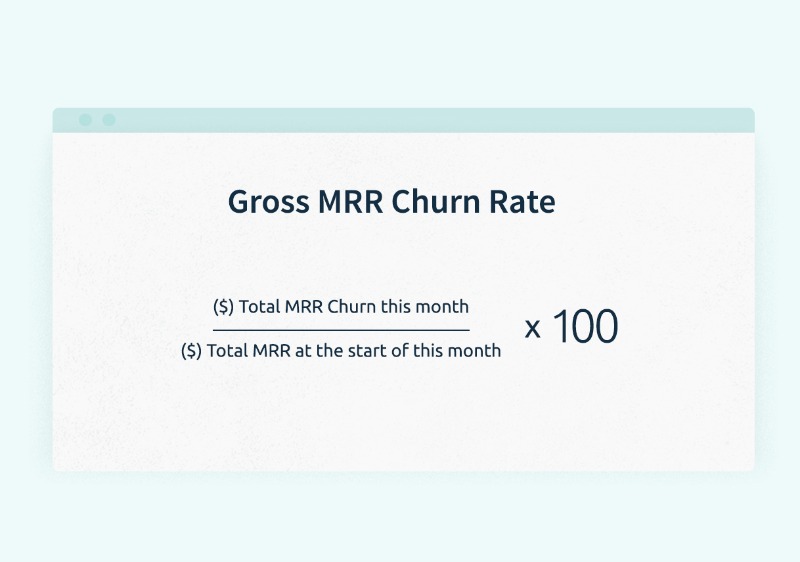
- Net MRR Churn
Net MRR Churn or net dollar churn, is doing almost the same thing as a dollar churn, but its main difference is that it implies a compensation method.
In other words, we receive net dollar churn as a sum of all lost customers minus expansion revenue in a month, and once more, we divide it by the revenue that we had at the beginning.
Measuring this churn regularly is extremely important because, ideally, the arrival of the new customers should compensate for the loss. If not, it’s time to change something.
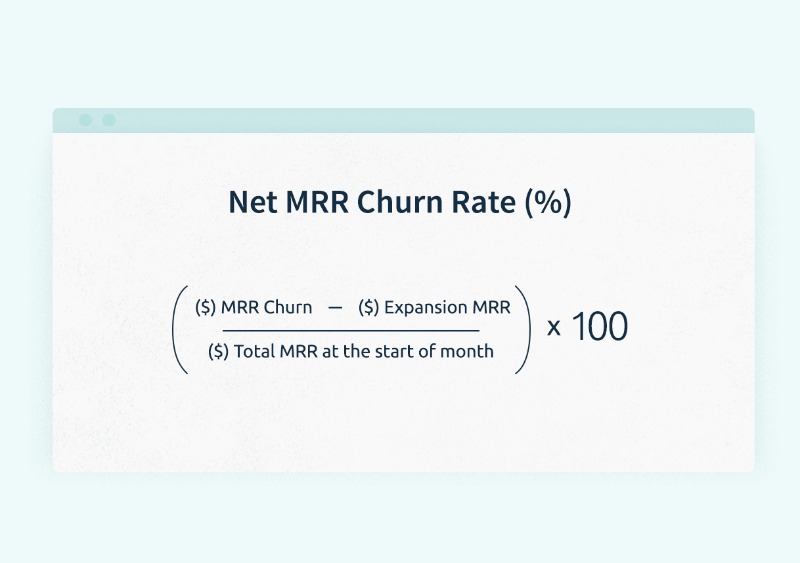
Expansion Revenue
The next customer service metric is expansion MRR or expansion revenue. This metric has more “positive” meaning. Because here we are identifying our progress and how quickly our sales are growing from already active, existing customers and how often our clients are buying more pricey functional. So, here we take revenue from upsells and divide it by revenue you had at the start.
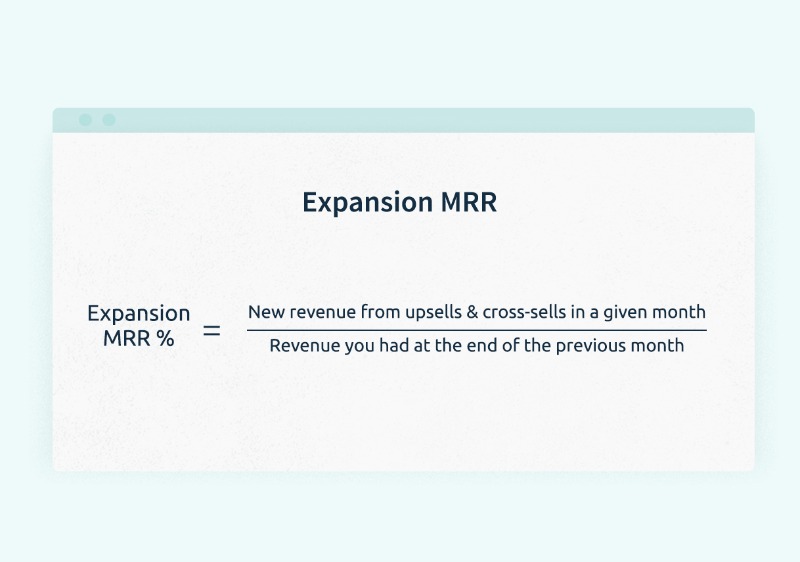
Customer Satisfaction
Customer satisfaction is key to determining customer’s feelings about your brand. It is a powerful tool to be proactive and prevent the problem before the system's collapse. When customers are unhappy with services provided, these success metrics below display it and are giving you, as a manager, an opportunity to stop clients from quitting.
- Net Promoter Score (NPS)
NPS is working on a very uncomplicated scheme. You just ask your clients how likely they are to promote your product, from 1 to 10. Logically, 1 is “ I won’t recommend it at all,” and 10 is “ I definitely will recommend it”.
This way, we can divide all the responders into three groups: promoters (9-10), passives (7-8), and detractors (1-6). As a rule, we disregard the passives and take the percentage of promoters minus the percentage of detractors.
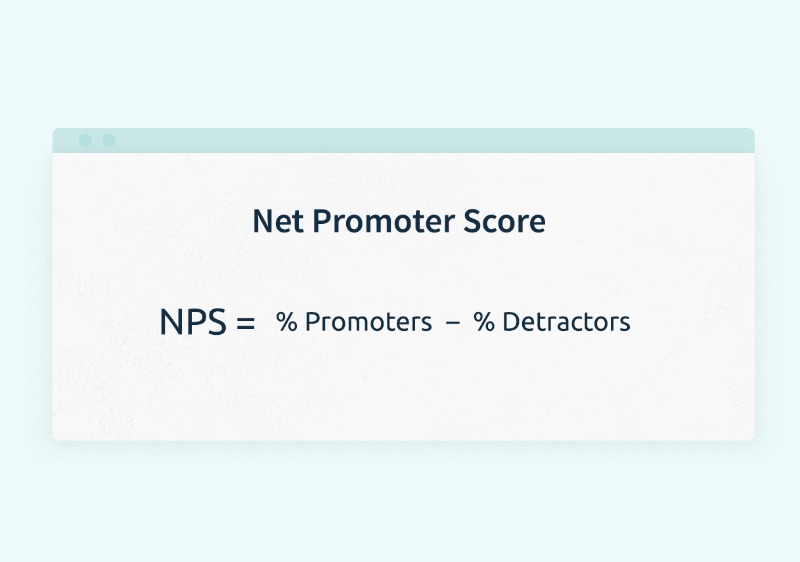
- Customer Satisfaction Score (CSAT)
This metric requires a bit of previous preparation. CSAT measures the client’s satisfaction in a particular time period and when a particular occasion triggers the client. It can be a customer's interaction with customer care service, purchase moment, or when a client uses his or her discount coupon. CSAT helps in understanding which service of your company should be updated or enriched. Here we also take positive responses in a period of time and divide them by the total sum of responses.
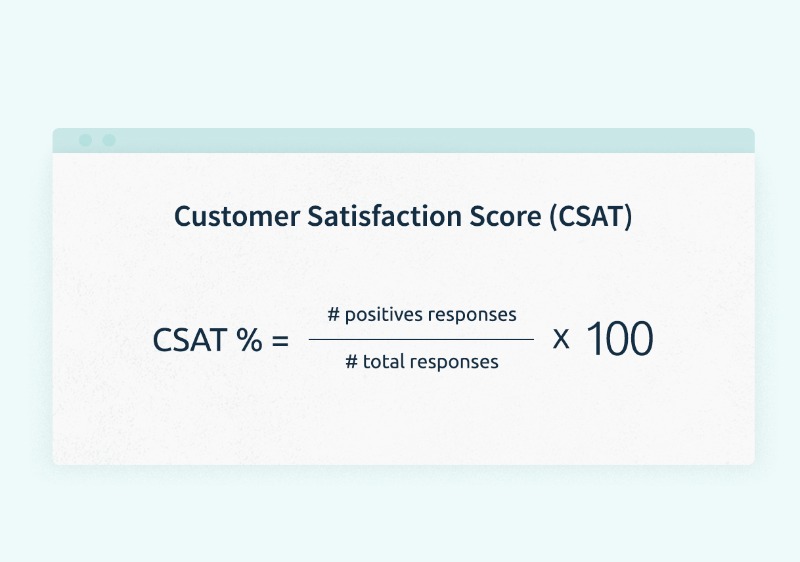
Other metrics
In this category, we’ve placed some general customer growth metrics that are useful in counting your revenue from users and the whole retention of customer service and success.
- Average Revenue Per Account (ARPA)
ARPA is the average amount of income, which you are receiving per one client. We need it to demarcate products, as providing high revenue and low revenue. Remember MRR churn?
We divide it by the total amount of customers. And of course, we measure it every month. Yes, that’s it.
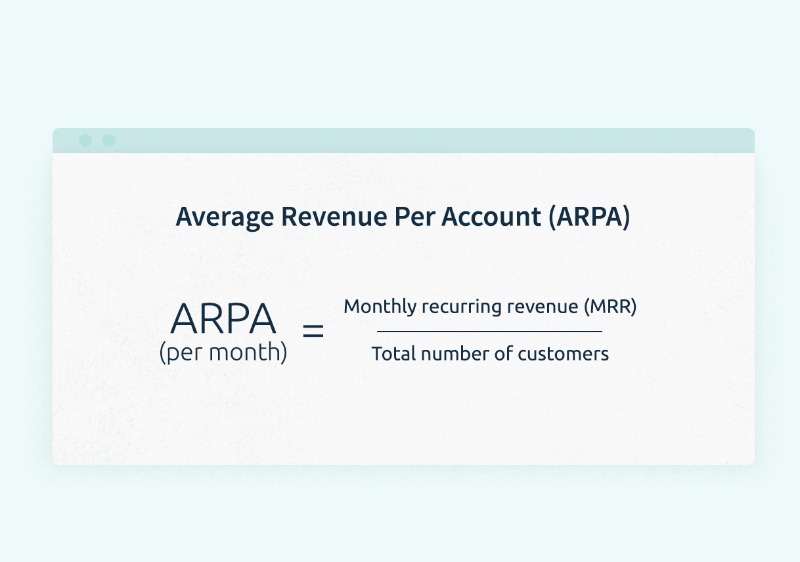
- Customer Retention Cost (CRC)
CRC measures the whole expanses of your brand on customer service, including customer service team, software, development of the new customer success strategies, and marketing. You have to compute it to have a clear understanding, where you spend money and whether you distribute it effectively.
Besides, this sum may be changing with adopting brand-new techniques, so this also has to be calculated monthly and annually - for global predictions.
To identify CRC, you should take all expenses and divide them by the number of active customers, and you will get an average result.
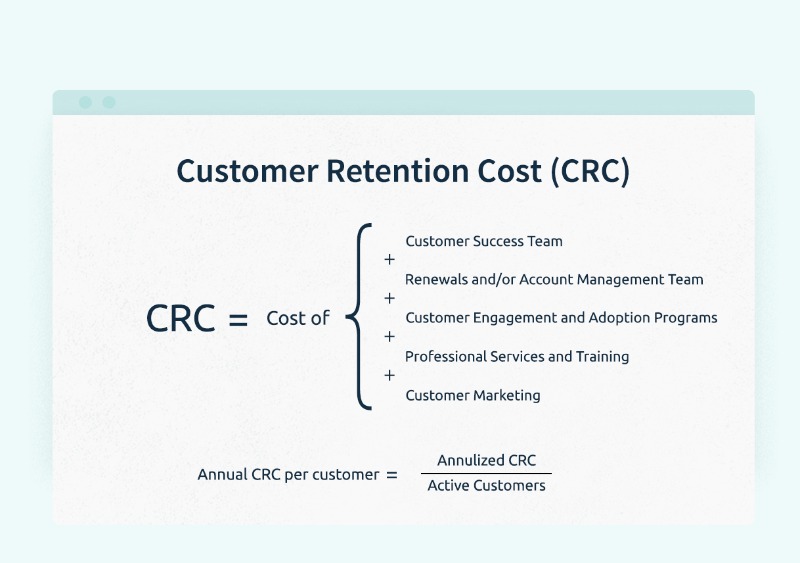
- Customer Lifetime Value (CLV)
Customer lifetime value is quite significant if we talk about customer success strategy. CLV is used to count the revenue that the company can get from one customer. It is really convenient, in terms of identifying the most treasured part of customers. CLV helps to juxtapose real numbers and our customer lifetime predicted wishes.
Multiply average purchase value by the average purchase frequency rate. When you‘ve identified customer lifespan, you can compute lifetime value. And here, one more time, we multiply the lifespan value by lifetime value.
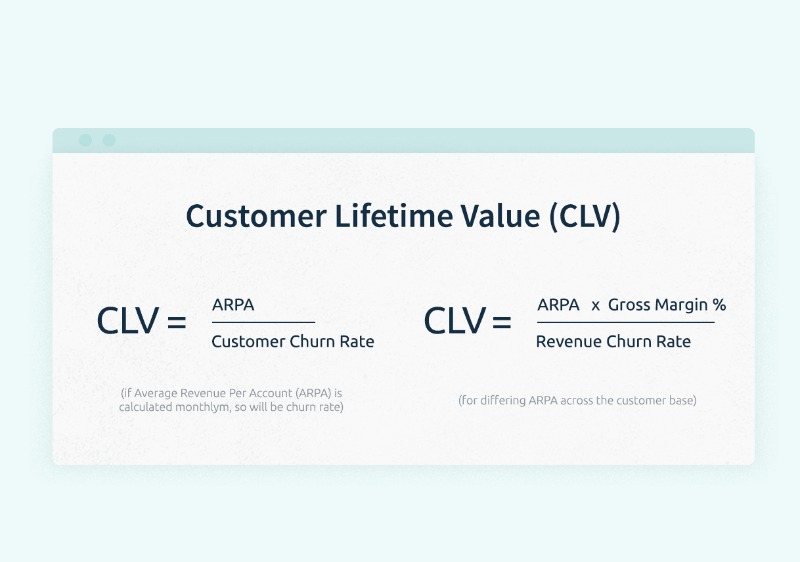
- Conversion Rate (CR)
This metric is computed for websites, emails, ads, etc. CR is a percentage of the whole amount of people who visited a webpage, who did real interactions with it. In other words, these are actual clients who bought something. Also, in the same way, we could calculate the number of clicks for emails and pop-ups. However, consider that you can utilize this formula for upcoming traffic, but it won’t work for pages inside.
So to define conversion rate, we take the total amount of conversions and divide it by the sum of clicks or visits. In the end, we multiply the result by one hundred.
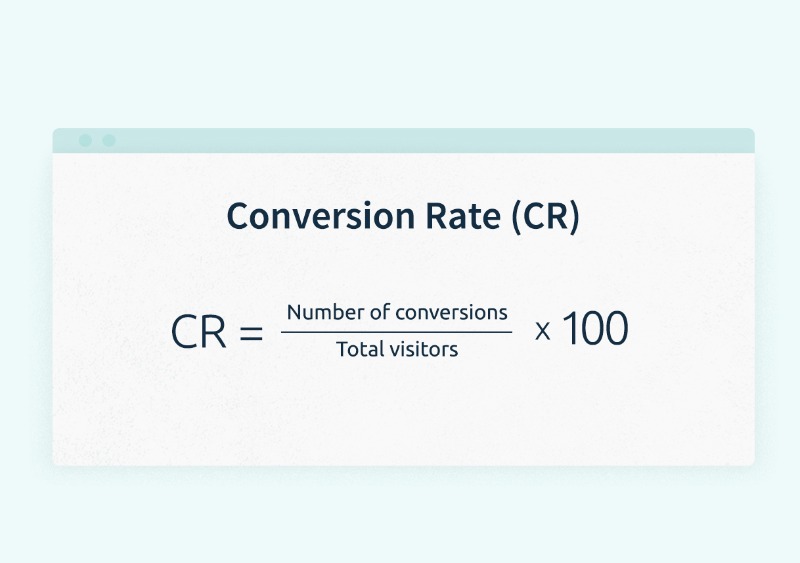
Conclusions
Customer success comes from a huge demand for prioritizing customer experience and appeasement of the needs of both clients and companies. Measuring customer success underlines customer trends and builds a clear vision of strategy.
Relying on CSM as a basis for all brand departments will bring you to a new level of quality, while it won’t leave a chance for unpredicted situations. Investing in your company is a smart thing, but investing in your clients is profound.
